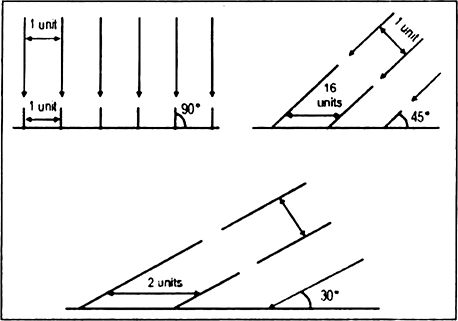How does angle of the sun's rays falling on the ground affect the amount of insolation? Describe with an appropriate diagram.
i. When the sun is overhead its rays are nearly vertical over the surface and are more concentrated. Hence, the intensity of insolation is more. If the angle of incidence is low, rays are oblique. Therefore its spreadout is more and the intensity of insolation less.

Inclination of the sun rays
ii. The sun's rays striking the earth at a small angle of inclination traverse more of atmosphere than rays striking at a high angle.
Longer the path, greater the amount of scattering, reflection and absorption by the atmosphere which reduces the intensity of insolation at the surface. At sunrise the angle of incidence of sun's rays is low. Hence solar energy received is low. At noon, the angle of incidence is highest and so the solar energy received is high.
During evening again the angle of incidence becomes lower than at noon and the solar energy received is low. Hence, the solar energy received on the surface of the earth is directly related with the angle of incidence of the rays of the sun.



